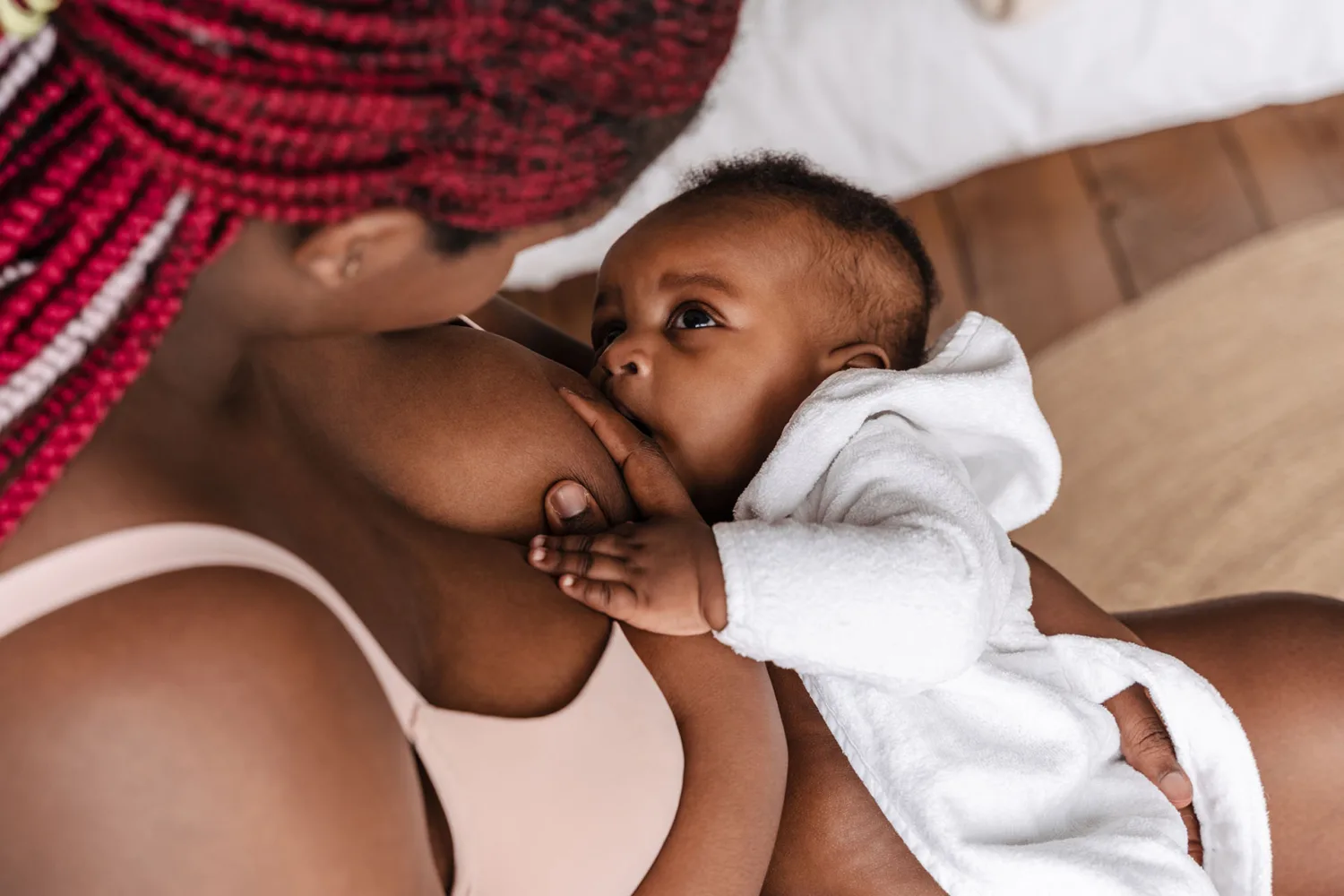Congrats, mama! After months of pregnancy and hours (and hours!) of labor, you are finally holding your sweet baby in your arms. Whether you gave birth at home, in a birthing center, or a hospital, the pros were there to help you with the baby’s first latch and answered all your questions. But once it’s just you and your newborn, the first time you breastfeed can feel like a guessing game: is the baby hungry? Are they getting enough milk? Is this supposed to hurt?! How do I know when they’re full? So we put these tips together to help you have the best beginning possible on your breastfeeding journey. Relax, mama. You’ve got this!
Create a Dedicated Nursing Set Up
You will be close to your baby during the first few days, so it makes sense to have a dedicated nursing set up nearby. Support pillows, burp cloths, pumping, and milk storage supplies are key components, as are snacks and drinks for mom. Balms, ice packs, or other healing comforts are great additions for mom too. When your baby is hungry, you’ll know by their cues: turning their head towards your breast and nuzzling, licking their lips and poking their tongue out, opening and closing their mouth, sucking on their fist or fingers, and, of course, crying.

Assume The Position
Get yourself into a comfy position, and cradle the baby in your arms, facing your breast. With your free hand, lightly rub your nipple on their lips to coax them into opening their mouth nice and wide (as if they were taking a big bite of a sandwich). Hold your breast for the baby to find; there’s no need to push it into their mouth. Once attached, if the baby’s lips are flared on your breast, they have a proper latch. If the lips are curled under, use a clean finger to unlatch the baby's mouth from your breast and try again. Remember, the baby needs to latch onto your entire areola, not just your nipple–so while you might feel some discomfort, there shouldn’t be any pain.
Latch Achieved
Your baby’s slow, rhythmic suckling and swallowing will indicate they are getting their fill of colostrum, the thick pre-milk packed with the essential nutrients and antibodies your baby needs. Even just a few drops of colostrum are beneficial for the baby’s immune system, and these first breastfeeding experiences help to stimulate your milk to come in within three or four days of giving birth. You’ll know that the baby is getting full when their suckling starts to slow, or they may even fall asleep. If this happens before you’ve switched breasts, you can now pump from the other.

Be Kind to Yourself
Now, let’s be real, mama. Sure, breastfeeding is a natural process, but it is certainly not an easy one. This journey can include sore nipples, low milk supply, infections, or a difficult latch. Because of this, we know how precious each drop of milk you produce is, whether it’s an entire bottle or just a few ounces. Remember, you and baby are both brand new at this, so be gentle with yourself if your first breastfeeding experience doesn’t meet your expectations. Besides, you’ll have lots of opportunities to perfect the process since your newborn needs to eat every two hours!
Breastfeeding for the first time on your own can be frustrating and difficult for both you and your baby, but with time it can become second nature. If it starts to feel overwhelming or impossible, you can also just pump that liquid gold and send it to us at Bébé Bru to be freeze-dried and nourish your baby for years to come.

